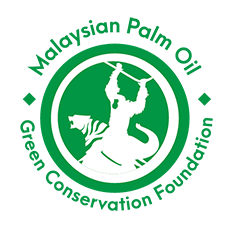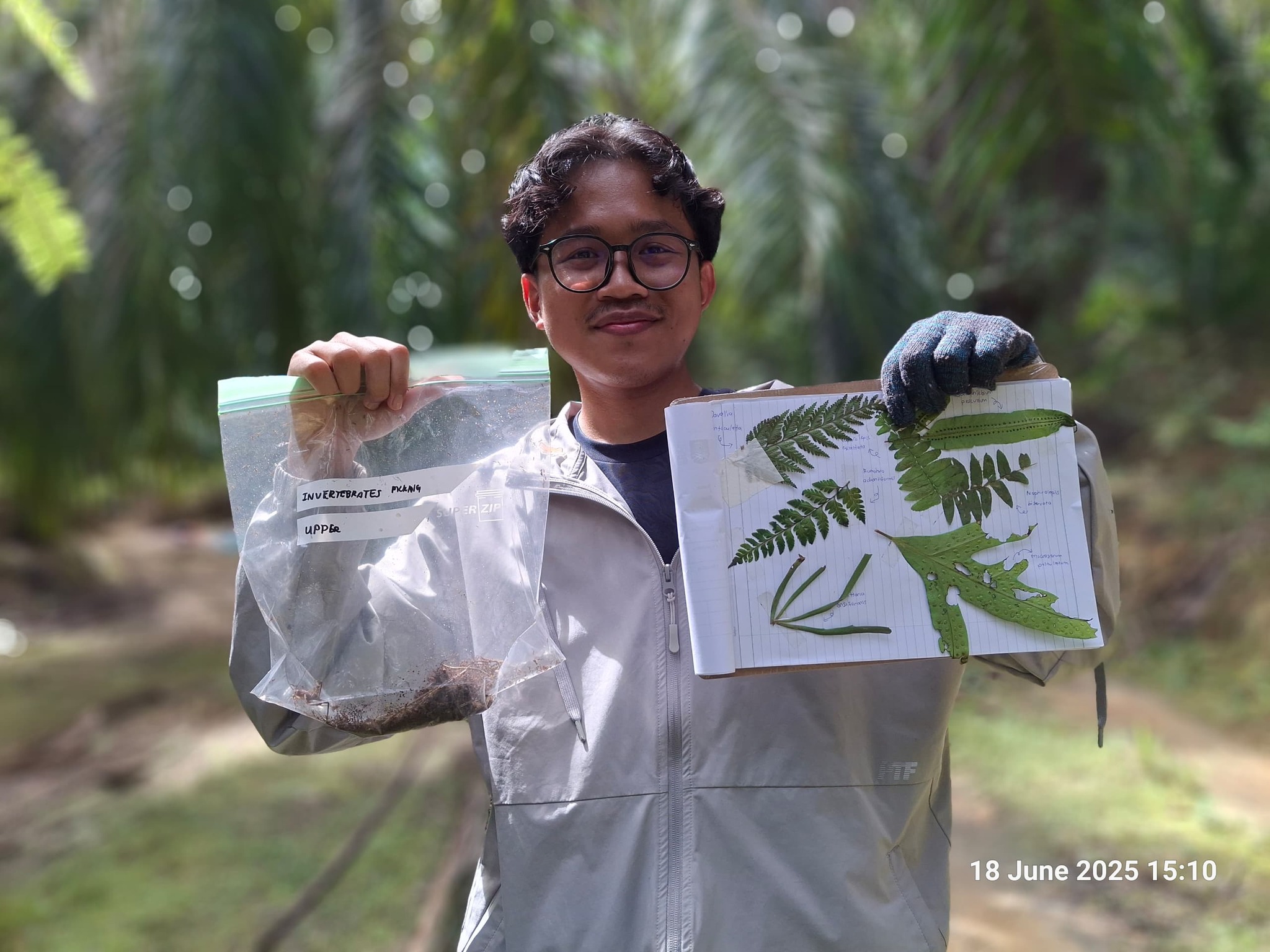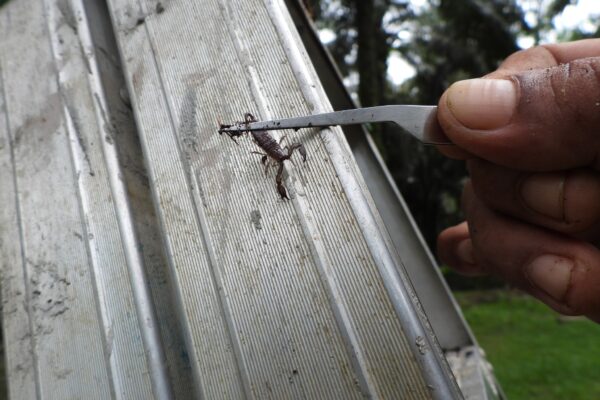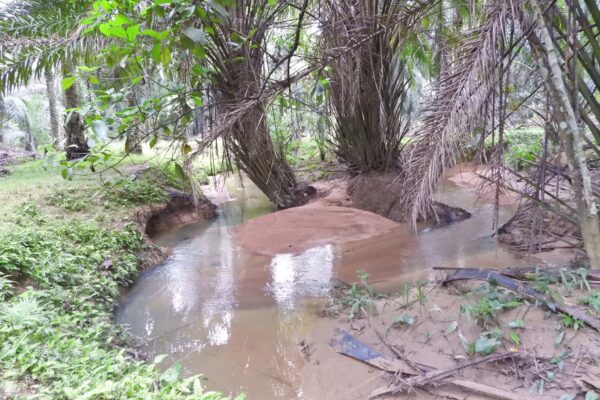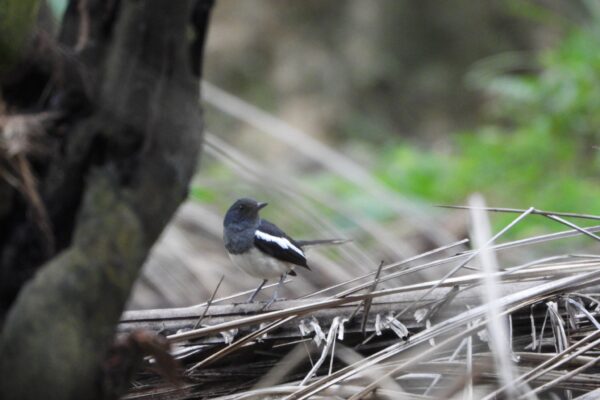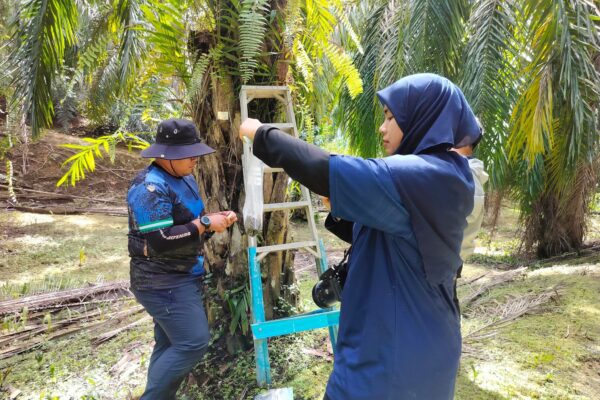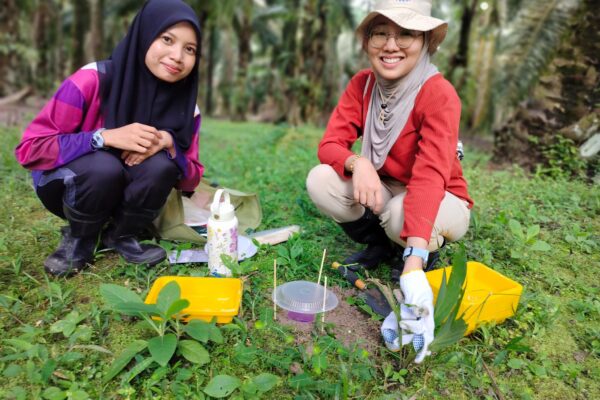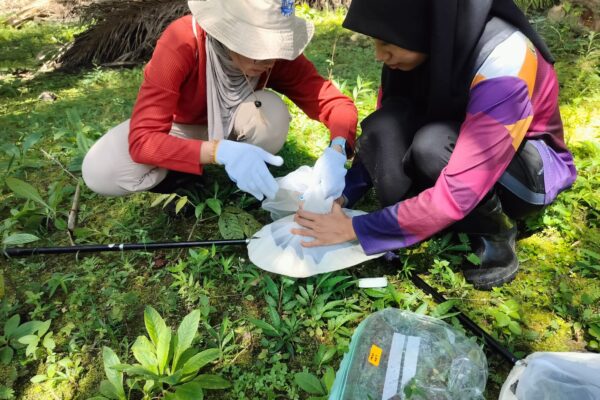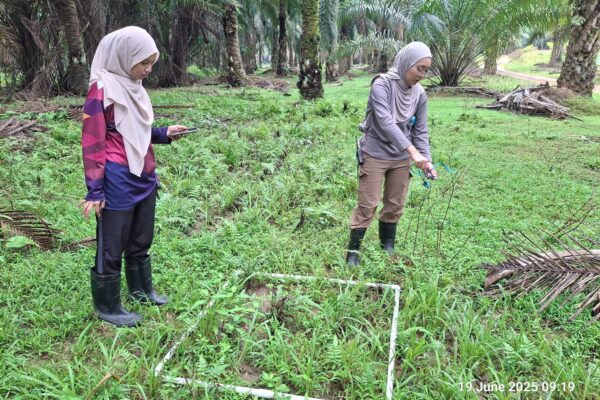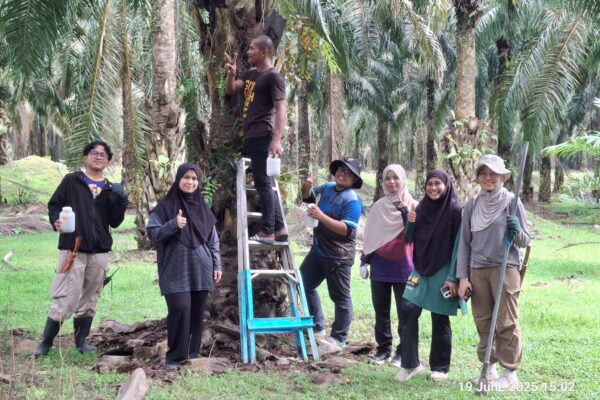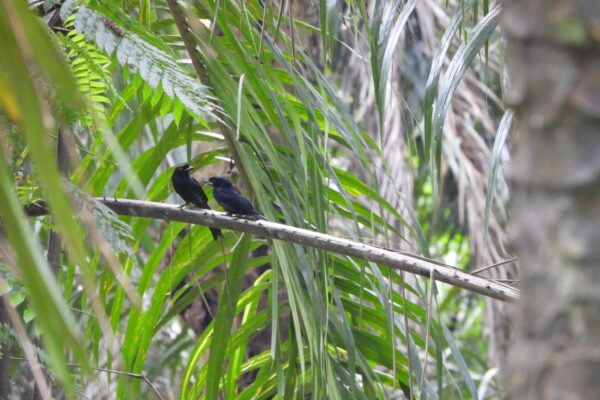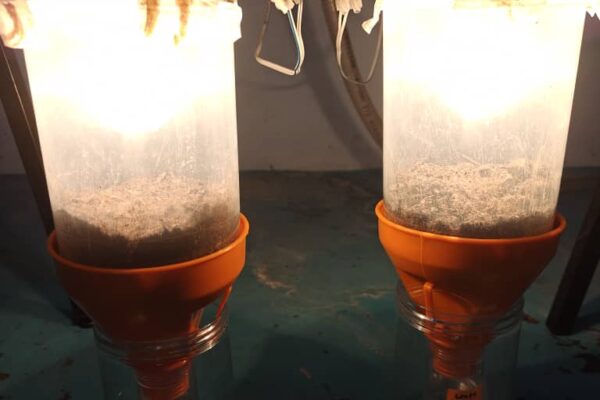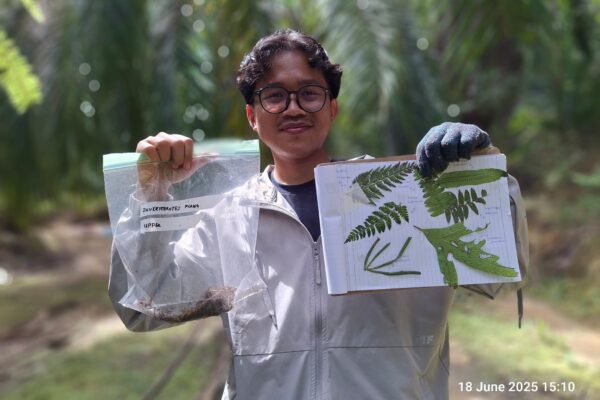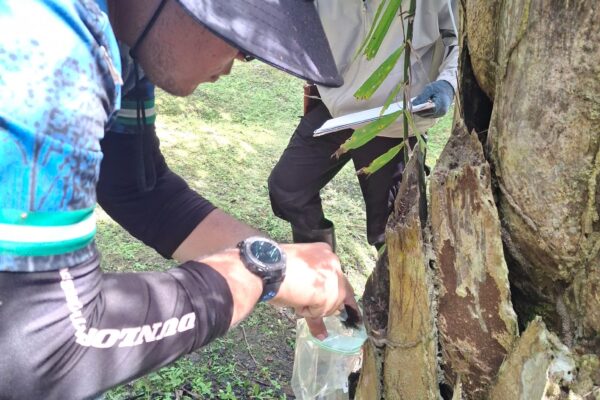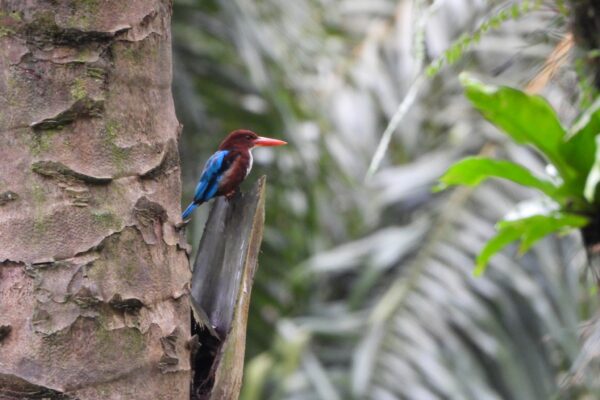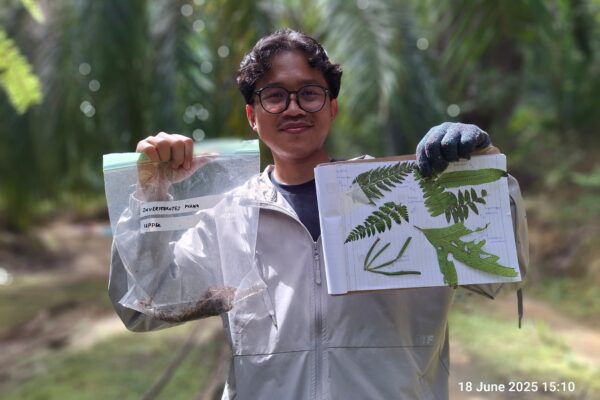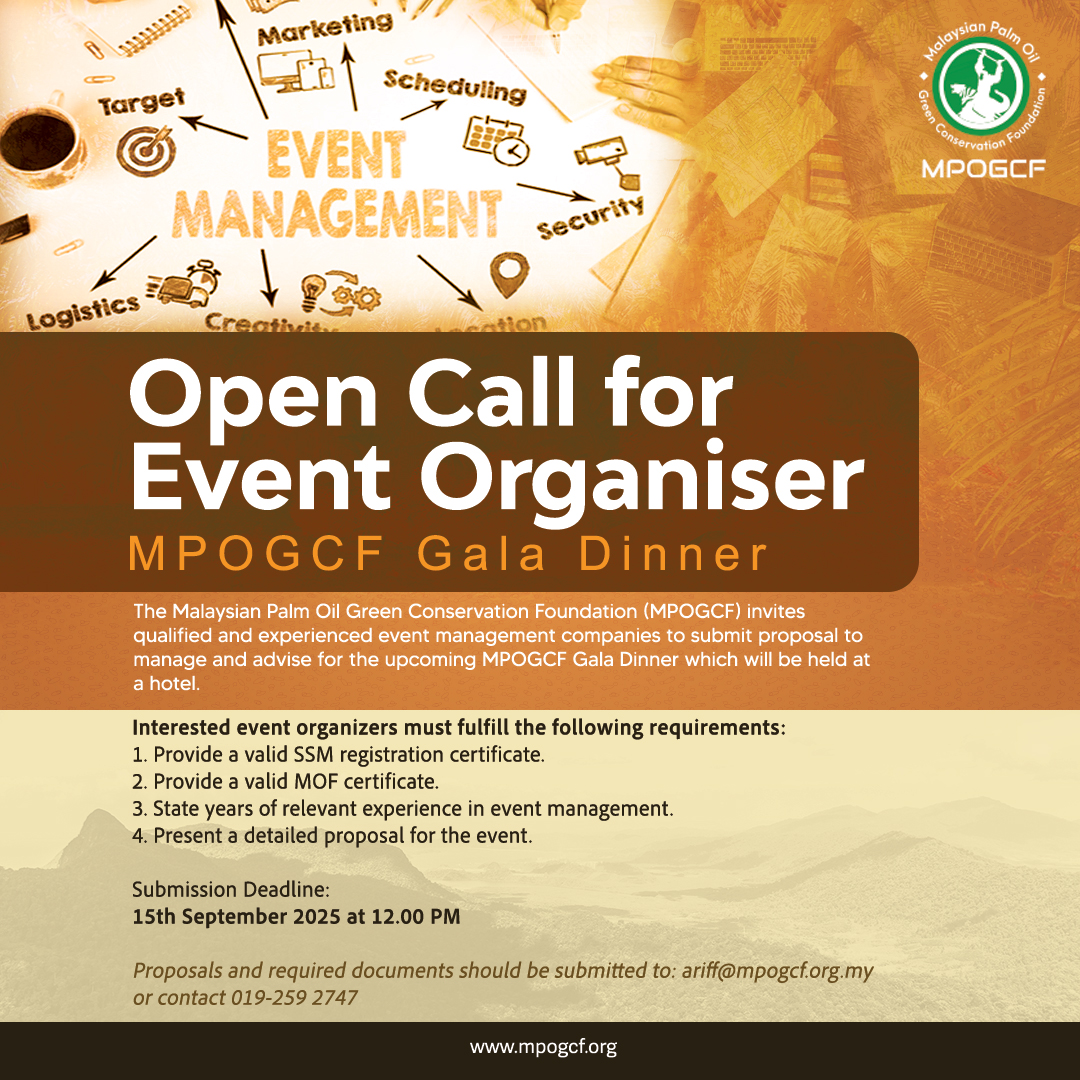The fieldwork held from 16 to 20 June 2025 aimed to identify the types of flora present within the oil palm plantation, assess the role of these plant groups in supporting faunal species diversity, and compare management practices between smallholders and large plantation companies.
This RM221,000 project, sponsored by MPOGCF was also attended by MPOGCF’s Conservation and Sustainability Executive, Zalifah Ramli, the Chairman of Koperasi Pelancongan Hanya D’pasoh Berhad and UiTM graduates.
Two main methods used in the study were surveys of plant and animal diversity. The flora species studied were divided into two groups: epiphytes growing on oil palm trunks and understory vegetation. The fauna species surveyed included invertebrates, small mammals, and birds.
For each plantation, 30 oil palm trees with the highest abundance of epiphytes were selected for the epiphyte study, with each tree assessed for the number and diversity of epiphytes as well as the types of insects present on the palm trunk. For the understory vegetation study, 30 plots measuring 1m x 1m were used to record all flora and fauna species present.
The animal surveys aimed to document fauna presence within the plantation using malaise traps, mist nets, pitfall traps, yellow pan traps, camera traps, and Berlese extractors. As with the flora study, samples were collected from three different zones within the plantation: areas adjacent to forest, central plantation zones, and plantation edges.
The study is expected to demonstrate that maintaining epiphytes and understory vegetation within plantations can enhance biodiversity and contribute to more sustainable and environmentally friendly agricultural practices.
The next fieldwork session is scheduled for August to record the presence of fauna species.
